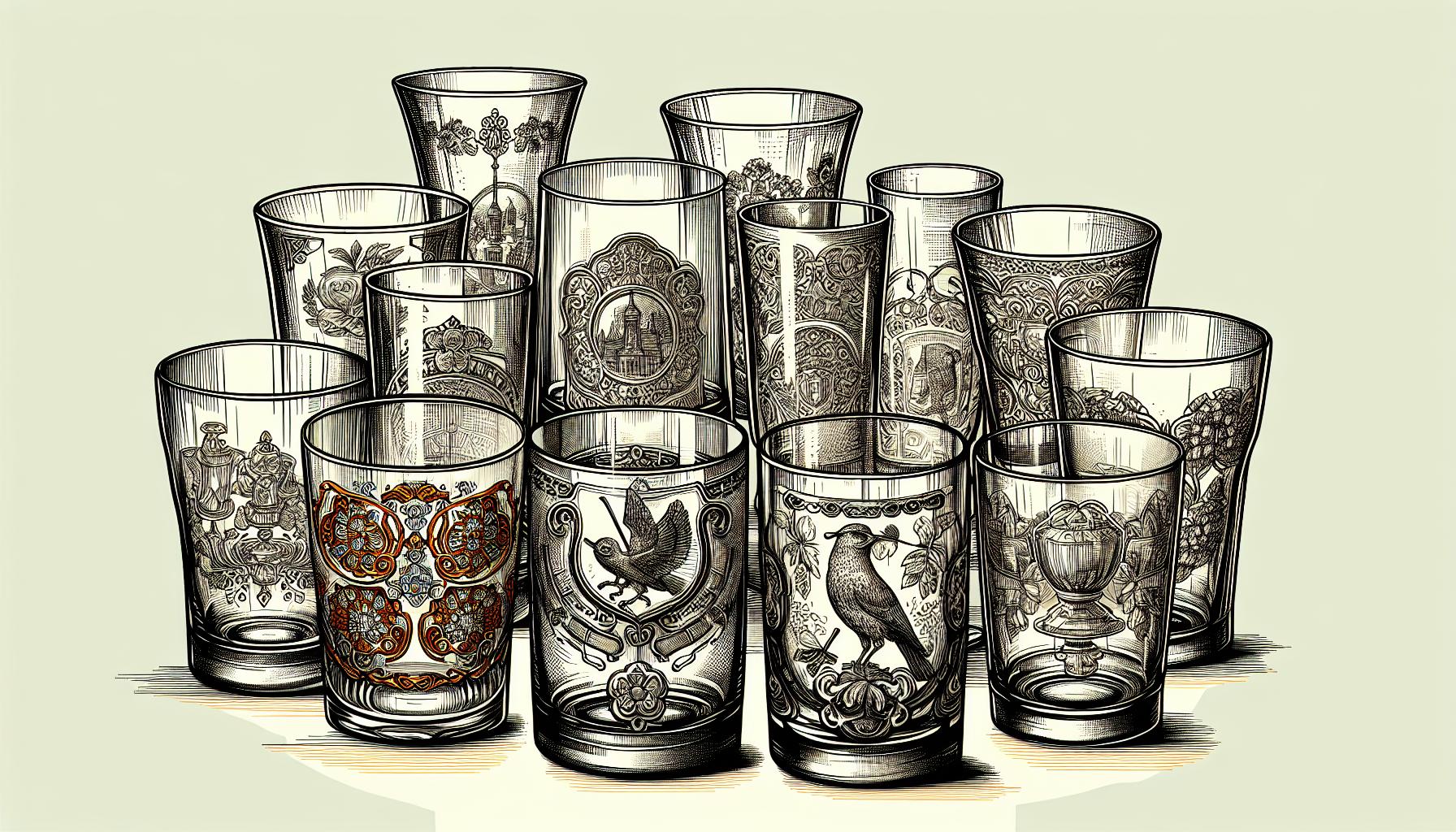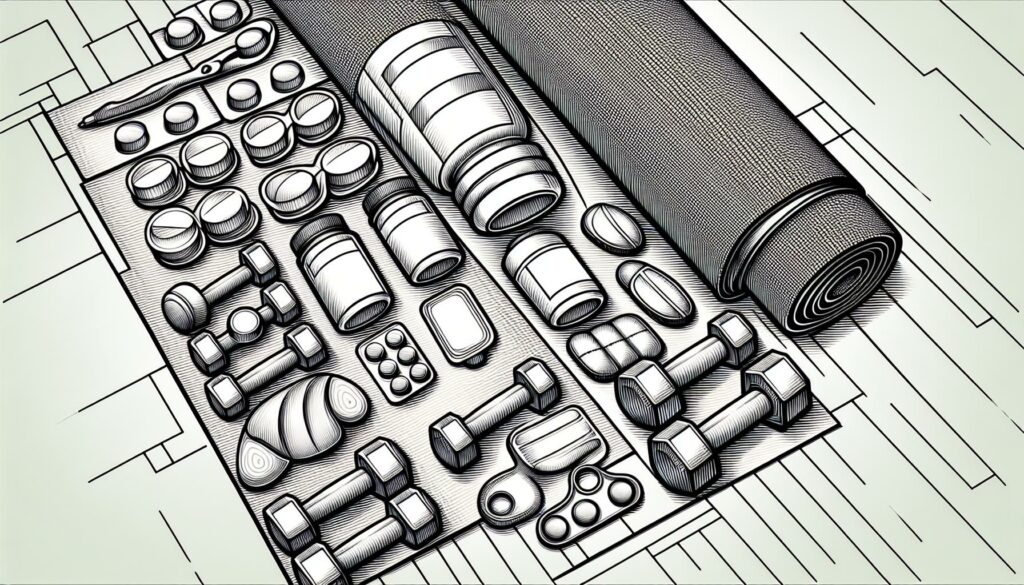Ever paused to think about what’s lurking in your favorite tumbler? I mean, it’s just a tumbler, right? But what if I told you that something as simple as your go-to drinkware could be subtly affecting your health? It’s a bit alarming, I know. But stick with me; I’m here to dive deep into the nitty-gritty of lead exposure from tumblers, and trust me, it’s something you’ll want to know about.
I’m no doctor, but I’ve done my assignments on the potential symptoms and risks associated with lead in tumblers. We’re talking about stuff that can impact you without even realizing it’s happening. I’m here to guide you through understanding these risks and how to spot them. And hey, knowledge is power, right? By the end of this, you’ll be armed with the info you need to make safer choices for you and your family. Let’s get into it.
Key Takeaways
- Lead is a hazardous metal that can sneak into our tumblers, potentially leading to serious health issues, especially in children who are more vulnerable to its effects on growth and brain development.
- Symptoms of lead exposure can be subtle and escalate over time, affecting both children and adults with signs like fatigue, headaches, and learning difficulties, underscoring the importance of awareness and preventative measures.
- Identifying lead in tumblers involves checking labels for lead-free certifications, considering the age of the tumbler (with older ones more likely to contain lead), and being cautious of brightly colored or decorated drinkware which might use lead-based paints or glazes.
- Taking action by testing tumblers with lead testing kits is crucial for protecting health, making it a simple yet effective step towards ensuring our daily drinking habits are safe from lead contamination.
What is lead?

When we talk about keeping our families safe, we often focus on what we can see. But, let’s jump into something hidden yet just as dangerous: lead. It’s a metal found in various places around us. So, what exactly is lead, and why should we be cautious of it, especially in tumblers?
A Sneaky Metal
Lead is a heavy metal. It’s soft and grayish. For a long time, people used it in paint, pipes, and even toys. But here’s the kicker: it’s toxic. That means it can hurt our bodies if we’re not careful.
I bet you’re wondering where it creeps up. Well, lead can get into things we use every day, like tumblers. Yep, those cups we drink from. If they’re old or not made safely, they might have lead. And when lead gets into our drinks, it can sneak into our bodies.
Why Worry?
Here’s why we should pay attention. When lead gets into our bodies, it can make us feel sick. We might not feel it right away, but over time it can cause big problems, especially for kids.
Think of our bodies like gardens. If we water them with dirty water, the plants won’t grow right.
Lead is like that dirty water for our bodies. It can mess with our brains and make it hard for kids to learn. No one wants that, right? So, checking our tumblers and other stuff for lead is super important.
Spotting the Signs
Now you know lead is bad news. But how do we make sure we’re steering clear of it, especially when it’s lurking in everyday items like tumblers? Stick around, and I’ll share some tips on spotting those sneaky signs before they cause trouble. After all, being in the know is the first step to protecting ourselves and our loved ones.
The potential risks of lead exposure

When it comes to lead in our tumblers, I gotta say, it’s a real concern. Let’s jump into why and how this stuff might affect us.
It’s Everywhere
First off, lead isn’t just in old paint—it’s in lots of places. You might find it in water pipes, soil, and yes, even in some tumblers. I learned that lead exposure can happen if we’re not careful. For example, if a tumbler has lead and you drink from it, tiny lead particles can get into your water. That’s a problem.
Health Effects Are Serious
Onto how this affects our bodies. Even a little bit of lead is bad news. For kids, it can slow down their growth and cause learning problems. Brain development is super important for kids, and lead messes with that. For us adults, lead can make us feel tired or give us a headache. Long-term, it’s even worse, leading to problems with our brains and nerves.
Checking Is Key
So, what do we do? Checking our tumblers becomes crucial. I found out there are kits to test for lead. Using one can tell us if our favorite drink container is safe. It’s a simple step that can keep us healthy.
Knowing all this makes me think twice about the tumblers I use. It’s all about staying informed and taking action to protect ourselves and our families. And hey, there’s always a new favorite tumbler out there, right? Let’s make sure it’s a safe one.
Lead in tumblers: How does it happen?

Have you ever wondered why we often hear stories about lead in our kitchen items? Let’s jump into how lead sneaks into our tumblers.
Old Is Not Always Gold
One main way lead finds its way into tumblers is through old products. Back in the day, manufacturing processes didn’t always follow strict safety standards. Old tumblers might look cool, but they could be hiding lead. It’s like finding a hidden enemy in a treasure chest.
Manufacturing Mishaps
Sometimes, the problem starts right in the factory. Not all countries have tight rules about lead. So, companies in those places might use lead to make tumblers faster and cheaper. Cheaper production often comes at a cost, sadly.
Paints and Coatings
Another sneaky path for lead is through paints and coatings. Some tumblers have colorful designs. If those decorations are made with lead-based paint, there’s a risk right there. It’s like dressing up danger in a pretty outfit.
Recycling Gone Wrong
Recycling sounds great, right? Well, sometimes recycled materials used in tumblers include lead. If companies don’t check the recycled stuff properly, lead can sneak into new products. It’s like inviting a wolf into the sheep pen.
So, are all tumblers dangerous? Not at all. It’s about knowing where they come from and how they’re made. By staying informed, we can make safer choices. Now let’s look at the key steps to avoid lead exposure from tumblers, keeping our homes safe and our drinks clean.
Symptoms of lead exposure from tumblers

When I started digging into how lead affects us, it was eye-opening. Let’s break it down.
What’s Up with Kids
Kids are super sensitive to lead, and the signs are not always loud and clear. They might seem tired, not feel like playing, or have trouble in school. Lead messes with their growth and can make learning tough. Remember, kids show symptoms first because their bodies are still growing.
And the Adults?
For us grown-ups, it’s a bit different but no less serious. Feeling tired all the time, getting headaches, or having a stomach that just won’t settle? That could be lead talking. It’s sneaky because these symptoms can easily be waved off as just another bad day. But if you’re using an old tumbler for your morning coffee, think twice. Adults get hit by fatigue and headaches most commonly.
Moving from how kids to adults react, it’s clear: lead doesn’t play favorites. Every sip from a suspect tumbler adds up.
The Long Haul
Here’s the kicker – lead sticks around. It accumulates in our bodies over time. So, those tiny exposures? They add up to a big problem. That’s why checking tumblers for lead isn’t overreacting; it’s being smart.
As we’ve seen, lead is no joke. From our kids to us adults, it’s a hidden danger that deserves our attention. And while finding out if your tumbler has lead seems like a small step, it’s a giant leap for your health. So, what’re we waiting for? Let’s make sure our sips are safe.
How to spot lead in tumblers

When you’re worried about lead in your tumblers, knowing what signs to look for can make all the difference. Not every tumbler has lead, but it’s better to be safe. Let me walk you through some tips.
Look at the Labels
First off, check the labels or stamps on the bottom of the tumblers. Manufacturers often note if their products are lead-free. If there’s no info, that’s a red flag. I always keep an eye out for phrases like “lead-free” or “non-toxic.” It’s a good starting point.
The Age Matters
Older tumblers are more likely to contain lead. If you’ve got a tumbler that’s been around since the ’70s or ’80s, there’s a higher chance it’s got lead. I always suggest going for newer, modern tumblers when you can. They’re more likely to meet current safety standards.
Color and Design Clues
Brightly colored or decorated tumblers can sometimes have lead in the paint or glaze. I tend to be wary of vivid designs or antique glassware. Simple, clear glass is often a safer bet. If the color is super bright or the design seems old-school, I think twice.
These aren’t foolproof ways to detect lead, but they can guide you towards safer choices. It’s always best to test if you’re unsure. Lead test kits are my go-to. They’re easy to use and can give you peace of mind. Next up, I’ll jump into why these kits are a must-have for any concerned tumbler owner.
Conclusion
So there you have it. Keeping an eye on the tumblers we use daily is more crucial than we might’ve thought. I’ve shared the risks and what to look out for but remember, it’s all about being proactive. I’m definitely going to be more vigilant, especially with the older, more colorful tumblers in my cupboard. And grabbing a lead test kit? That’s next on my to-do list. Protecting our health and that of our loved ones is paramount, and it starts with something as simple as choosing the right tumbler. Stay safe and informed, folks.
Frequently Asked Questions
Can lead be found in tumblers?
Yes, lead can be present in tumblers, especially older ones or those that are not marked as “lead-free.” It is crucial to check your tumblers for lead to avoid exposure.
What are the health risks of lead exposure?
Lead exposure can lead to serious health issues, including impaired growth and learning problems in children, and fatigue and headaches in adults. It’s important to minimize exposure to protect your health.
How can I check my tumblers for lead?
To check your tumblers for lead, look for labels stating they are “lead-free” or “non-toxic.” For older or unmarked tumblers, use a lead test kit for a more definitive answer.
What should I do if I find lead in my tumblers?
If you find lead in your tumblers, stop using them immediately and replace them with lead-free options. Disposing of lead-containing tumblers safely is essential to prevent further exposure.
Are there any tips for spotting lead in tumblers?
Yes, to spot lead in tumblers, avoid older items, be cautious with brightly colored or decorated tumblers, and look for “lead-free” labels. When in doubt, use a lead testing kit.
How effective are lead test kits?
Lead test kits are a helpful tool for determining the presence of lead in tumblers. They offer peace of mind but should be used as directed to ensure accuracy.


